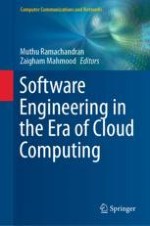2020 | OriginalPaper | Chapter
4. Migrating from Monoliths to Cloud-Based Microservices: A Banking Industry Example
Authors : Alan Megargel, Venky Shankararaman, David K. Walker
Published in: Software Engineering in the Era of Cloud Computing
Publisher: Springer International Publishing
Activate our intelligent search to find suitable subject content or patents.
Select sections of text to find matching patents with Artificial Intelligence. powered by
Select sections of text to find additional relevant content using AI-assisted search. powered by
